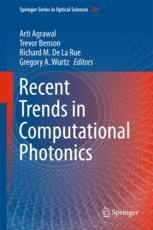

Most ebook files are in PDF format, so you can easily read them using various software such as Foxit Reader or directly on the Google Chrome browser.
Some ebook files are released by publishers in other formats such as .awz, .mobi, .epub, .fb2, etc. You may need to install specific software to read these formats on mobile/PC, such as Calibre.
Please read the tutorial at this link: https://ebookbell.com/faq
We offer FREE conversion to the popular formats you request; however, this may take some time. Therefore, right after payment, please email us, and we will try to provide the service as quickly as possible.
For some exceptional file formats or broken links (if any), please refrain from opening any disputes. Instead, email us first, and we will try to assist within a maximum of 6 hours.
EbookBell Team

5.0
40 reviewsThis book brings together the recent cutting-edge work on computational methods in photonics and their applications. The latest advances in techniques such as the Discontinuous Galerkin Time Domain method, Finite Element Time Domain method, Finite Difference Time Domain method as well as their applications are presented. Key aspects such as modelling of non-linear effects (Second Harmonic Generation, lasing in fibers, including gain nonlinearity in metamaterials), the acousto-optic effect, and the hydrodynamic model to explain electron response in nanoplasmonic structures are included. The application areas covered include plasmonics, metamaterials, photonic crystals, dielectric waveguides, fiber lasers. The chapters give a representative survey of the corresponding area.